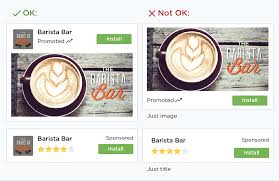 By now, it’s become obvious that native advertising will continue on a strong growth trajectory over the coming years. For example, estimates released in November 2014 by BI Intelligence forecast that US native ad spending would rise by 35.4% in 2015, to $10.7 billion. By 2018, this was expected to nearly double, hitting $21.0 billion. And in a Q4 2014 study by the Association of National Advertisers (ANA), 66% of US client-side marketers planned to increase their native ad budgets in 2015, vs. 55% who had done so in 2014.
By now, it’s become obvious that native advertising will continue on a strong growth trajectory over the coming years. For example, estimates released in November 2014 by BI Intelligence forecast that US native ad spending would rise by 35.4% in 2015, to $10.7 billion. By 2018, this was expected to nearly double, hitting $21.0 billion. And in a Q4 2014 study by the Association of National Advertisers (ANA), 66% of US client-side marketers planned to increase their native ad budgets in 2015, vs. 55% who had done so in 2014.
However, dollars don’t mean everything. Advertisers also need to understand what’s actually important when executing native advertising. Among ANA respondents, 96% said that creating native ads that were contextually relevant to surrounding editorial content was an important component of native advertising—the top response—and 63% even said it was “very” important. By creating ads that make sense alongside content—and thus, add value to the reader—advertisers can drive higher engagement and avoid annoying their audience.
Other responses highlighted the fact that creating ads that look like editorial content isn’t enough. Just under two-thirds said it was important for native ad formats to look like surrounding editorial content, with only 26% ranking this “very” important. Three-quarters also said that native ads should act like surrounding content upon interaction—but if they’re not identified as contextually relevant right away, that interaction may not happen.
There’s been debate over how native advertisers can avoid misleading consumers, who may get confused over whether something is sponsored or editorial content, and two-thirds of ANA respondents agreed that native advertising needed clear disclosure, while just 13% disagreed.
But what terms can advertisers include to help readers distinguish native ads from content? Unsurprisingly, respondents said that including “advertisement” and “ad” were the best to describe disclosure. However, several phrases that included the words “sponsored” or “paid” also worked well.
In a study conducted in late 2014 by The 614 Group and AdMonsters, 88.7% of US digital advertising, marketing and media executives said native advertising would be “somewhat” or “very” pervasive in 2015. In order to stand out in an increasingly competitive environment, understanding how to maximize native advertising efforts is critical.


